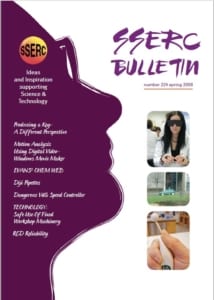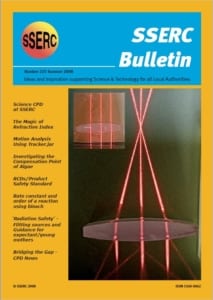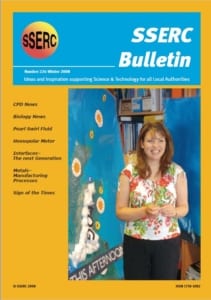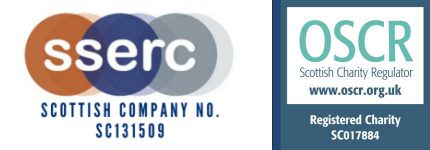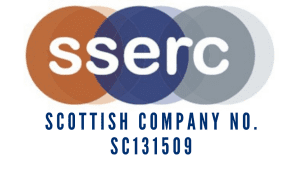Producing a key – A different prespective
Pupils are presented with the challenge of producing a key that could be used by people who are blind. They should be encouraged to think about the problems that a blind person would encounter and the skills they would be able to use in trying to identify specimens. Working in groups of three, pupils are then required to produce a ‘paired statements’ classification key which they would read out. From this, a blind person should be able to identify a number of biological specimens, either in the classroom or out in the field.
Motion Analysis Using Digital Video – Windows Movie Maker
Following our piece in SSERC Bulletin 221 on the use of digital video cameras in science classes, we take a look at simple motion analysis using Movie Maker, the video editing software supplied with later versions of Microsoft Windows® operating system.
This year’s Physics Summer School takes place at Glasgow University from June 23rd to June 27th 2008. Featuring lectures, lab work and visits, the event looks at ways that physics research can enhance the work that takes place in the classroom. The Summer School has always proved to be highly popular with physics teachers. It is therefore wise to book early. For more details, see the SSERC website for up-to-date information
It is some time since SSERC has had the opportunity to review any new style of glassware. Glassware doesn’t change much and what is around in schools is likely to be largely the same as was used thirty years ago. Volumetric glassware is a good example. Here we describe a new, safer-style pipette called the diji-pipette made by Diji and compare how well it performs against traditional graduated pipettes.
SSERC has agreed to cover the running costs of Evans²ChemWeb for the coming year. This means that all teachers & technicians in Scottish local authority schools and subscribing organisations to SSERC will be able to access Evans² Chemweb free of charge. For schools not in membership, Evans² ChemWeb will also be able to offer annual access to their site by direct application.
Health and Safety
Safe Use of Fixed Workshop Machinery
One of the first tasks of the Technician CPD Project was to undertake a survey of the provision of technical support for schools in local authorities in Scotland. It was found that not all users of fixed workshop machinery had been trained in their safe use and could not be deemed as ‘authorised’ users. One of the priorities for the project team was therefore to develop a course in the safe use of machinery.
A summary of our advice about the installation, use and testing of RCD protection.
Dangerous VDG Speed Controller
A large Griffin Van de Graaff generator (VdG), sometimes known as the Griffin Senior was brought to us for testing, the school being concerned that it could be capable of producing a dangerous spark from the dome. From the size of the dome, about 250 mm diameter, the machine is indeed theoretically capable of storing 1.0 J of energy, which could be rather dangerous, but the greater danger is the mains electrical system.
Determining the rate constant and the order of a reaction
The following experiment highlights a method of determining the rate constant and the order of a reaction. It uses the reaction between household bleach and blue food colouring.
Investigating the compensation point of algae
Pupils studying Higher Biology often have difficulty in understanding the concept of plant compensation points (the light level at which the rates of photosynthesis and respiration are equal). The experiment described here provides a method for exploring the light conditions under which either respiration or photosynthesis dominates.
Motion Analysis Using tracker.jar
Recently, we have been looking at analysing motion using video clips from digital cameras. Tracker.jar is a free motion analysis application written by Doug Brown of Cabrillo College, California.
We are delighted that the Scottish Government has granted further support for SSERC and its partners to continue and build on ‘Support for Scottish Science Education through CPD’ until March 2011.
If a transparent object is immersed in a transparent liquid that has the same refractive index as the material the object is made of, it disappears. This striking demonstration is easily performed.
CPD to support Curriculum for Excellence in science – sponsored by the Scottish Government A series of practically-based, residential workshops for teachers of biology, chemistry, physics & integrated science. Participants will receive resources and equipment for use in the classroom.
Health and Safety
Product Safety Standard for Schools and RCDs now needed in homes and schools under new regulations
We are pleased to report that BSI have published a draft standard, being a safety specification for electrical products for use by children in schools. Being derived from BE EN 61010-1, it sets additional conditions on fusing, the accessibility of dangerous parts, surface temperatures, water resistance and the emission of UV and laser radiation.
The IEE Wiring Regulations have been changed: the new regulations came into force on 1 July 2008. One of the main changes for schools and homes is additional protection for socket-outlets with residual current devices (RCDs) additional in the sense that the RCD supplements the normal fault-condition protection provided by fuses and other overcurrent trips.
We wrote about source security in 2006 after a school lost its radioactivity cabinet, along with its stock of sources. Alas, in 2007, the same thing happened in another school. With three lost cabinets in five years, what can we all learn to stop further loss?
Showing convection currents using rheoscopic fluid
Pearlescent fluid is something that we have all seen in products that we buy everyday (Figure 1). It is added to shampoo, bubble bath and liquid soap to give them that luxurious, pearly iridescent look. Pearl SwirlTM fluid is commercially available as a liquid concentrate pearly white suspension from Middlesex University Teaching Resources and is an example of a rheoscopic fluid. It is non-flammable, unreactive and contains no toxic materials.
Interfaces – The Next Generation
A review of some of the latest datalogging equipment: Pasco Xplorer GLX, Vernier Labquest, Asus EEE PC and Go! Sensors
An update on upcoming science CPD courses – and an introduction to some new SSERC personnel.
Metals – Manufacturing Processes
Focus Educational Software Limited have in the past produced products such as Resistant Materials, Plastics-manufacturing processes, Focus on Mechanisms, Focus on Mechanical Toys and Focus on Wood Joints. A new addition to their software catalogue is Focus on Metals – manufacturing processes.
The software allows the study of twelve industrial processes via a range of animations, video clips and images support written text. This allows industrial practice into the classroom.
Health and Safety
From Bugs to Big Beasties and other Queries
SSERC receives many enquiries as to which activities are permissible in a school within Health and Safety Guidelines. This article aims to highlight some of the common and not-so-common Biology related enquiries we have received over recent months.
An investigation of signs used within Technology departments

